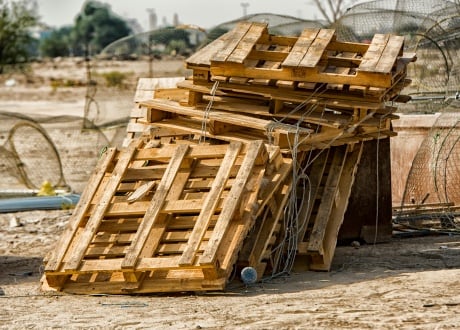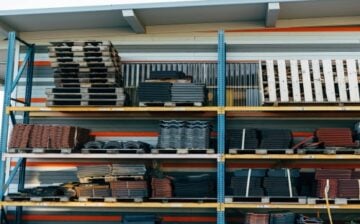In today’s globalized economy, the efficient movement and storage of goods is more important than ever. Whether it’s transporting consumer products across continents or organizing inventory in a local warehouse, one humble yet vital tool consistently plays a starring role: the wooden pallet. Though often overlooked, wooden pallets are essential to modern supply chains and have earned their place as a foundational element of logistics.

What Are Wooden Pallets?
Wooden pallets are flat structures which for the most part are made from either hardwood or softwood species. They are designed to put up with the weight of goods in a stable fashion which in turn allow for easy movement via forklifts, pallet jacks, or conveyors. Although in terms of design they are very basic in function they play a very important role in the easy transport and storage of products in a wide range of industries which include agriculture, pharmaceutical, manufacturing and retail.
A typical wooden pallet is made up of 3 or 4 stock rails which in turn support a number of deck boards on top and which forms a platform to put products on. Also pallets may be created in different dimensions and designs which is to fit the particular needs of the cargo and for ease of transport.
Why Wooden Pallets Remain Popular
Although in the age of plastic and metal options, wood still leads in this field—here is what is noted:
-
Cost-Effectiveness
Wooden pallets are also a low cost option which in turn makes them a great choice for companies that wish to control their shipping costs—something that plays out in the case of one way shipments or temporary storage.
-
Strength and Durability
A wooden pallet when built well may support up to thousands of pounds which makes them suitable for heavy goods. They provide the strength required to weather repeat use and handling in industrial settings.
-
Eco-Friendly and Recyclable
Wood is a renewable material which also is true of wooden pallets, and it is evident that they are easy to recycle and break down. Also many pallet producers are into sustainable forestry and use reclaimed and recycled wood which in turn reduces their impact on the environment. Also it is seen that damaged pallets may be fixed up or turned into wood chips for a second go.
-
Global Standardization
Wooden pallet sizes are the same in all international trade zones. This is to ensure that they fit into storage systems, shipping containers, and material handling equipment which in turn simplifies cross border logistics.
Applications of Wooden Pallets
Wooden pallets are utilized in a large range of industries as a result of their versatility and durability:
- Retail: Pallets speed up loading and unloading in retail warehouses and supermarkets.
- Manufacturing: Heavy equipment parts and large components are put on wooden pallets.
- Agriculture: Produce and packaged food products which are shipped use pallets for safety and ease of handling.
- E-commerce: Fulfillment centers use palletization for efficient package flow during peak seasons.
Types of Wooden Pallets
There are several types of wooden pallets, each designed for specific uses:
- Stringer Pallets
These have a frame of three parallel pieces of wood (stringers) which are often notched for forklift access. In the US they are very popular for general shipping. - Block Pallets
These usually are of greater strength than stringer pallets and are often used for four way entry with forklift trucks, which in turn makes them very easy to maneuver. Also they have wide scale use in Europe. - Custom Pallets
Many companies have custom designed pallets which may include specific size requests, weight capacity issues, or wood type for which they stand by.
Wooden Pallets in Sustainable Supply Chains
As environmental regulations tighten and more companies adopt green practices, wooden pallets have taken the lead as a sustainable choice in the logistics industry. It is clear that reusable and repairable pallets are not only reducing waste but that their full life cycle—from growth of the trees in the forest through to disposal in a recycling plant—is a more eco-friendly option than many of the synthetic alternatives.
Wooden pallets also are used in what are called closed loop systems in which they are constantly recycled, reconditioned, and put back into the flow of a company’s supply chain. This is good for the environment as well as improving cost performance and inventory management.
Choosing the Right Wooden Pallet Supplier
When it comes to procurement of wooden pallets, quality, reliability and sustainability should be the focus. A good supplier will see to it that pallets are built to industry standard, which in turn reduces the risk of breakage, contamination or inefficiency.
In this field, Sincere Pallet is seen as a leader. Known for their dedication to craftsmanship and environmental solutions, Sincere Pallet provides a wide range of wooden pallets for various industries and logistics. They design for long term durability into their products, which also are certified to international shipping and safety standards.
Whether for a small business that is on a tight budget or a large company seeking a dependable supply chain partner, Sincere Pallet delivers value and peace of mind.
Maintenance and Safety Considerations
Proper use of wooden pallets may extend their life and improve safety in the workplace. Here are some best practices:
- Inspect Regularly: Check for worn out boards, broken ones, or exposed nails.
- Avoid Overloading: Always adhere to weight limits to prevent accidents.
- Proper Storage: Store pallets in dry, covered areas to prevent moisture damage and mold.
ISPM 15 Compliance: When exporting goods, ensure pallets have been heat treated or fumigated to meet international phytosanitary requirements. Also make sure freight is in phytosanitary compliance when shipping out products. Proper documentation of the treatment applied is also a requirement. Packaging material should be free from pests. For full coverage, do not leave inspection to the last minute—integrate phytosanitary measures at all stages of the supply chain. Only certified treatment facilities should be used. That way, full compliance with international norms is ensured.
The Future of Wooden Pallets
As e-commerce grows and sustainable practices increase, the demand for wooden pallets continues to rise. Innovations like RFID tagged pallets, automated pallet handling systems, and AI-powered inventory tracking are changing the role of these basic elements in today’s supply chains.
Also of note is the growth in the areas of wooden pallet recycling and upcycling, which has put old pallets into use for furniture, building construction, and even art. This reflects their value beyond logistics into the world of sustainable design.
Conclusion
Wooden pallets may not head the list of what comes to mind in the logistics world, but in fact, they are very much at the core of it. They are a cost-efficient, reliable, and environmentally friendly solution for the storage and transport of goods all over the world.
Businesses in search of quality pallets should consider working with reliable suppliers like Sincere Pallet, a company known for durability, sustainability, and a strong focus on customer satisfaction that supports smooth logistics operations.
We hope you found this blog post on Wooden Pallets: The Backbone of Modern Logistics and Storage, useful. Be sure to check out our post on Must-Try Pallet DIY Projects for Spring for more great tips!
Have Experience in the Moving Industry? Want an Additional Income Stream? Work With All Around Moving!
Partner with All Around Moving Services Company and we’ll help you make money. Click here to learn more.





